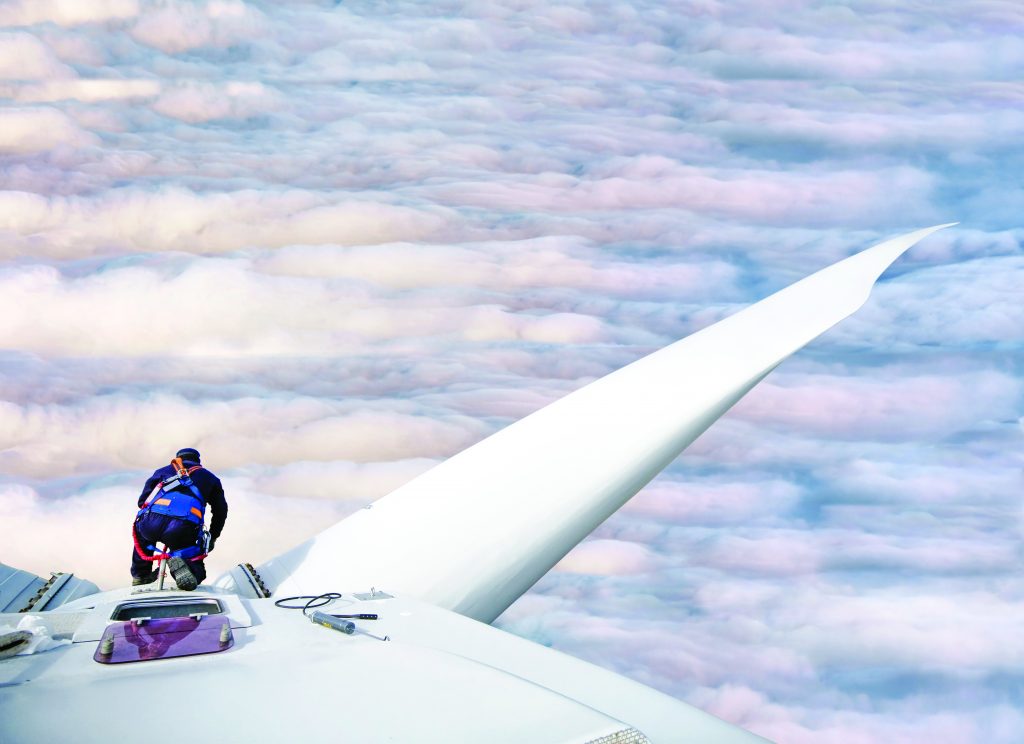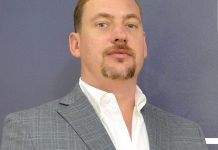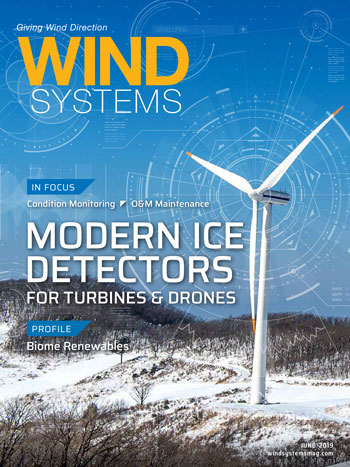What’s a typical day like for you at Bachmann?
We’ve got a lot of projects going, so our technical folks are working on those busily, and I’m also managing our sales and other efforts. I try to keep tabs on all the activities that they do and the progress on the projects while keeping tabs on our salesmen and on their pipeline of projects that are coming.
How does Bachmann modernize and extend a wind turbine’s life?
We have a long history in the wind space and a lot of experience working with different OEMs. With that experience, we’ve put together a template on how to operate a wind turbine based on IEC standards. We can completely retrofit the entire controls of a wind turbine and replace the hardware and software that runs it, or we can do a subset of that, which could be just the data system — condition monitoring equipment that either is stand alone or integrated with our controls. Then we can help owner-operators with special projects on data that they’re required to get by the grid operators or their management — having the keys to the data stream, which is basically what the control system is. We can help customize what the customer sees and the information they get. We can help them gain access for that data. That’s probably one of our biggest attributes or maybe even advantages over the others out there is being able to provide access to more data.
How do solutions offered by Bachmann create those economic opportunities for your customers?
Each piece has different functions, and the condition monitoring system can help a customer get away from time-based maintenance to knowing exactly what’s going on with their equipment — when things need to be fixed and replaced. It allows them to plan ahead for crane call outs and even avoid crane call outs when it’s possible. That’s one aspect.
The other is with our control software and SCADA. Again, we can help provide more information than they’re likely getting now or possibly will be in the future with some OEMs. There’s sometimes a conflict of interest between the OEMs and the owner-operators where the owner-operator wants more information and the OEM wants to provide less.
With the access we can provide, it allows the owner-operator to be able to even microsite turbine by turbine. It can allow them to make adjustments that they wouldn’t normally be able to do with the OEM solutions.
How has the changing face of technology helped Bachmann within the wind industry?
It is a rapidly changing business, and there’s downward pressure to pricing. We’ve been able to utilize the highest tech solutions and technology and still keep our pricing and our piece of the overall turbine fairly constant. An example of that is where we recently were talking to a customer that was looking to extend the life of their older turbines. The turbines weren’t worth a huge amount of money just because of their age, but it had a high PPA, and that PPA required that they couldn’t make significant changes in the turbine. They couldn’t repower by changing out the whole nacelle, extending the blade length, and some other things that you hear about with customers utilizing the PTC, due to constraints written into the PPA. They basically had to kind of stay within certain constraints and not do a whole lot with major components of the turbines in order to maintain that PPA.
This turbine is no longer being manufactured, but the folks are still around that made it, and their solution is 1980s technology with open circuit boards. We were able to do that with a very sophisticated control system for virtually the same price.
On top of that, there are just the years of development and experience that we’ve gained after working with all these different manufacturers, providing solutions on the OEM side. When there’s an improvement for one, the other manufacturers gain from that improvement when we perfect something and help find a solution. We’re going to offer that and likely make it a standard offering going forward. Our hardware and software have developed and improved over the years. As technology has advanced, we’ve advanced with it, and our customers are the ones that benefit from that.

Your customer base ranges from the big companies to the smaller operator. Are there similarities as to how you approach that range of clientele?
The smaller operators are the ones without as much resources as some big operators that can do their own programming and have teams of engineers to be able to take our open solutions and customize it to their needs. We often deal with customers that have only a few turbines, and they certainly don’t have an engineering team. For instance, we have a customer that has 14 turbines, and they need a lot of support. What we try to do with our standard offering is have it be user friendly, and if they have the capability of customizing it if they need to, they can go ahead and do that with their engineering teams. But if they don’t and they require something, we can customize it for them.
What are some of the ways Bachmann approaches wind-energy challenges now that were not possible 10 years ago?
Well, 10 years ago, there were a lot of turbines coming into the market, and some of those OEMs have disappeared. There has been a lot of requirements put on by the grid operators that weren’t there 10 years ago, and so there’s been a need for things to improve. When these turbines were sold about 10 years ago, I was a developer and buying wind turbines. When we were having those conversations, we were talking about these turbines lasting 25-30 years and didn’t assume that there would be a need for control changes. We knew there were certain maintenance things that would be done, but those people didn’t foresee some of the things that have come to pass in the industry.
With the PTC that is soon expiring, that gave a number of the owner-operators an opportunity to reinvest in those older assets and either spend big dollars on repowering, if that was a possibility, or they got a smaller upgrade, but they got that government money. I don’t think you can count on that in the future. There’s talk about extending the PTC, but there’s certainly no guarantees, and those needs are still out there for a whole lot of turbines. So, we’re trying to position ourselves to be a resource for those that weren’t part of those repowerings and other major things. There was only so much bandwidth that even the big repowering OEMs had. There are only so many turbines that they could do, and that leaves a whole lot left after the PTC goes away. We’re positioning ourselves to be a resource across the automation spectrum of the wind industry.
Where do you see wind in the next 10-20 years and Bachmann’s place in that future?
I fully believe that we’ll have an active place in it with multiple OEMs as we do now and as we continue to add on. It may look different; there’s been consolidation and that could likely continue. There are a couple of turbine manufacturers that are struggling, and we actually happen to be a provider to some of those companies now, and we’re hoping that if they get consolidated or bought by someone else, that company will see the advantages of us continuing to be a provider.
But we’re continuing to grow, and a huge amount of our overall turnover goes to R&D — a lot bigger than most companies. With that being the case, we’re planning to grow and fill the needs for new turbines being built as well as the older fleets are out there that want to keep running for 30 years.
More info www.bachmann.info








































